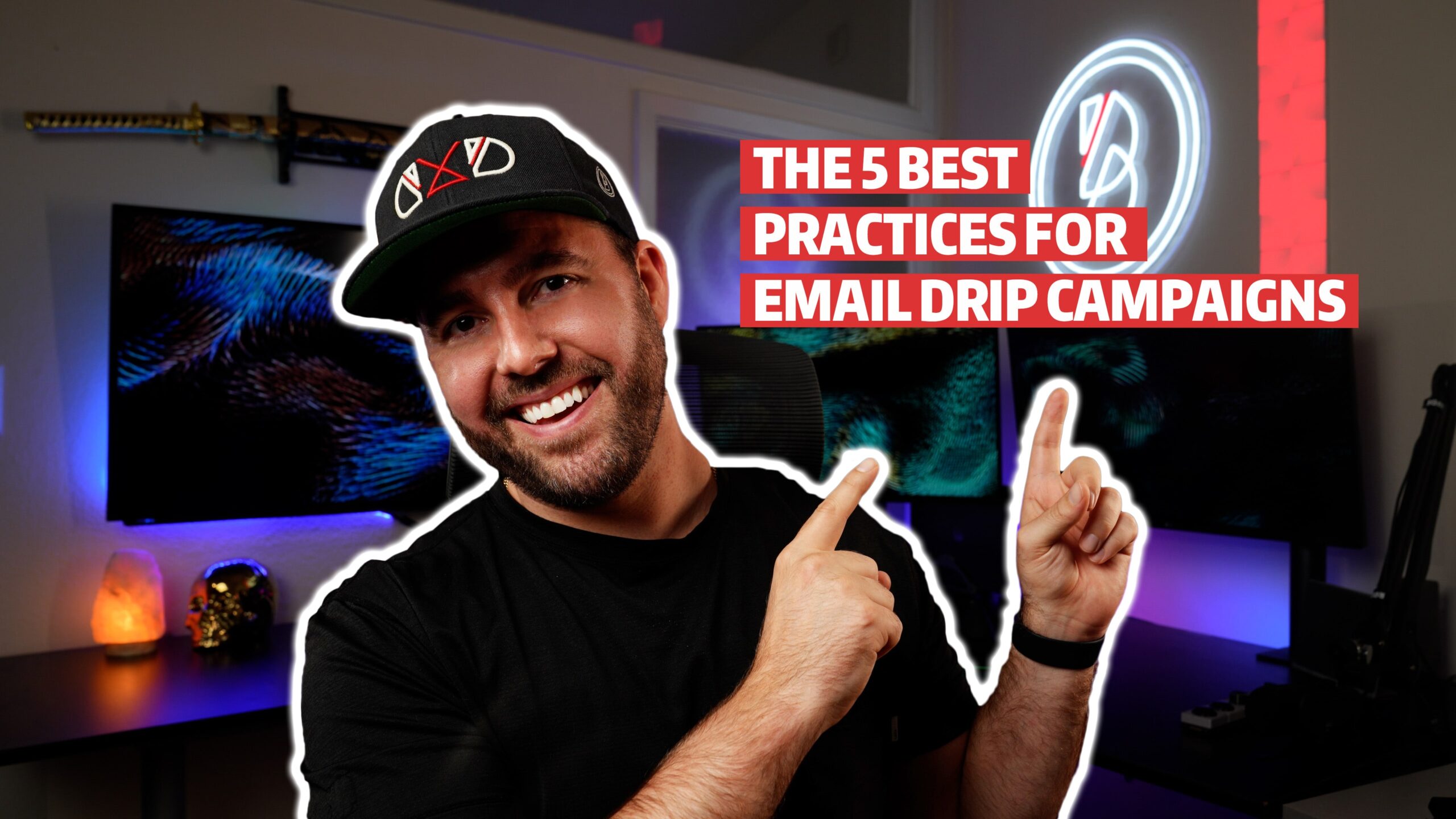Considered one of the most powerful marketing channels, email marketing is the digital form of direct mail and is used to promote a business’s products or services.
It communicates with leads and customers with the goal to inspire them to take action and convert them into buyers.
An important component of email marketing is the so-called email drip campaigns.
To find out what it is and how to use it to your advantage, continue reading.
What Is an Email Drip Campaign?
An email drip campaign refers to a marketing strategy that sends, or “drips,” a pre-written set of messages to leads or customers over time.
These messages are meant to not only reach readers but also convert them into paying customers.
Creating effective email drip campaigns requires time, effort, and expertise.
The perfect timing and content are essential to engage readers. That is why you need to know exactly who your customers are, what their preferences are, and, most importantly, what their needs are.
Once you have this information, you can craft an email schedule that is tailored specifically to them.
Before you create and launch your email drip campaign, you need to know what to do to get your messages noticed and read.
To help you out, we’ve created a list of best practices that ensure your drip campaigns are a success.
What Are The Best Practices for Email Drip Campaigns in 2022?
1) Create Diverse Content
Internet users are constantly bombarded with content. Their email inboxes are full of personal, work, and marketing emails.
To stand out in a sea of messages, you have to ensure that your content is unique and entertaining.
It’s the best way to keep your audience engaged and ensure they continue opening and reading your emails. Also, switching it up regularly keeps your messages interesting and fresh.
Try a few of the following topics to offer diverse content:
- How-to’s and tips
- News stories about your business
- Product or service-related messages
- Promotions with special offers and savings
It can be difficult to regularly come up with new content.
If you struggle with finding things to write about, don’t worry – all businesses face the same challenge.
To get some inspiration, browse social media, industry websites, and blogs and sign up for newsletters of your competitors. Social media comments provide a wealth of information on what customers are interested in.
Once you know what the current conversation revolves around, you can tailor your message around that or similar topics.
Another idea is to talk to your sales team or store employees to find out what shoppers ask about and what they are interested in.
To fully leverage sales or promotions, plan a series of emails that remind your customers of the deal you’re offering. It’s not excessive to send three or four emails throughout a sale to encourage readers to shop.
If they are qualified leads or existing customers, they will be thankful and take action to save money when shopping from your sale.
2) Segment Your Email List
If you’re sending your marketing messages to one email list without segmenting it into subgroups, you are wasting your time and potentially missing out on increasing your conversions.
When people receive emails that are not relevant to them, they either delete them, mark them as spam or unsubscribe from the email list. To avoid that, take some time to segment your audience into niche clusters.
You can group your customers and leads into different segments.
Do that by analyzing their preferences, behavioral data, personality, location, and more, and then create niche lists to send targeted messages to.
For example, readers who landed on your email list through a referral program should receive a welcome email, whereas existing customers don’t need them.
Find a way to segment your emails so that they best suit your company’s email marketing strategy.
Micro-segmentation takes this a step further and gets to know your readers even better. Simply send a survey to your email list, ask readers to fill it out, and segment them based on their responses.
You can create micro-segmentation groups based on:
- Location (e.g. house, office, places frequented, and more)
- Buying habits and personal favorites (e.g. favorite time to shop, read emails, etc.)
- Age
- Gender
- Profession
- Preferred travel locations
- And much more
According to researchers, companies that have taken the time to segment their email list have seen a revenue increase by as much as 760%!
That’s too significant to ignore.
In short: avoid sending unhelpful and unnecessary emails to all your subscribers. Instead, create better emails by grouping all your subscribers into specific segments to whom you can then send targeted messages.
3) Use Trust Signals
Trust is essential when it comes to sales and marketing. Without it, prospects are unlikely to turn into paying customers and subscribers won’t bother reading your emails.
To build trust, make sure that you follow these essential tips:
- Handle Your Subscribers’ Information With Care – People are increasingly concerned about the information they share online. They want to know that they are not at risk of being defrauded. Depending on what information you collect from readers, make sure you have the proper security measures in place to protect their data and let them know that their data is safe with you. Sending out an email that explains how you protect their data or adding a disclaimer at the end of each marketing message will go a long way in putting their fears at ease and building trust with your brand.
- Send Your Emails Gradually – Nobody enjoys constantly being bombarded with marketing emails. In fact, it can have an adverse effect and end up agitating readers to the degree that they will not only unsubscribe from your email list but also leave a negative review about your brand or business online. To avoid that, send emails gradually.
- Add Trust Signals To Your Emails – Trust signals vary and can include adding your accomplishments, certifications, or customer testimonials and reviews to your emails. But also something as simple as using a down-to-earth, relatable tone to reach your readers can build trust. It’s a subtle way to nurture readers, strengthen your relationship with them, and lead them to take action (e.g. buy from you).
Bottom line: you have to build trust with your audience.
It makes them feel safe and gives them the confidence to buy from you with peace of mind.
Trust is necessary to encourage readers to take action like shopping at your store, sharing your content with their networks, or following you on social media.
4) Give Your Audience Options
Providing your audience with options is the best way to get them to sign up for your email list and remain subscribers.
They should be able to choose how often and what type of emails to receive from you.
Without these options, your subscribers will receive all your emails, even if they are not relevant to them. That increases the chance for them to unsubscribe.
Therefore, allow them to select how often they receive messages from you and what content they get to read.
To do this, set up a page that people who click on your unsubscribe button land on.
Here, offer your subscribers options to choose from, they can decide what marketing emails to receive from you and how often. That means, even though someone may have clicked your unsubscribe button, they may simply choose to receive emails less frequently or unsubscribe only from a portion of your content instead of disappearing altogether.
5) Test and Make Changes
Chances are, you don’t know what really works until you’ve tested it out.
Be flexible and put different ideas into action to find out which ones engage your audience and inspire action, like converting prospects into buyers.
To start testing different approaches, prepare the same content with different designs.
For example, add certain visuals to email A and leave them out in email B.
Now, send both emails to a different portion of your email list and wait to find out how they fared with your audiences. Which of these emails engaged the readers the most? Once you get the results, don’t just stop there.
Test out other options to develop a better understanding of what your target audience likes and responds to.
Aside from different designs, you can also test different send times and calls-to-action (CTAs).
Doing this can elevate your email marketing campaign and help you reach your goals. Exploring different options will help you create better content and a more effective marketing strategy, which is good for your audience and for your business.
Final Thoughts
Email drip campaigns are pre-written messages sent to your customers over time.
An efficient email drip campaign will not only engage your audience, but will also retain clients, convert prospects into paying customers, and result in more sales.
While it may take some time to understand your audience’s preferences, your effort will pay off in the end.
So keep this in mind when creating email drip campaigns and create engaging content that is relevant to your readers and reaches them at the right time.

